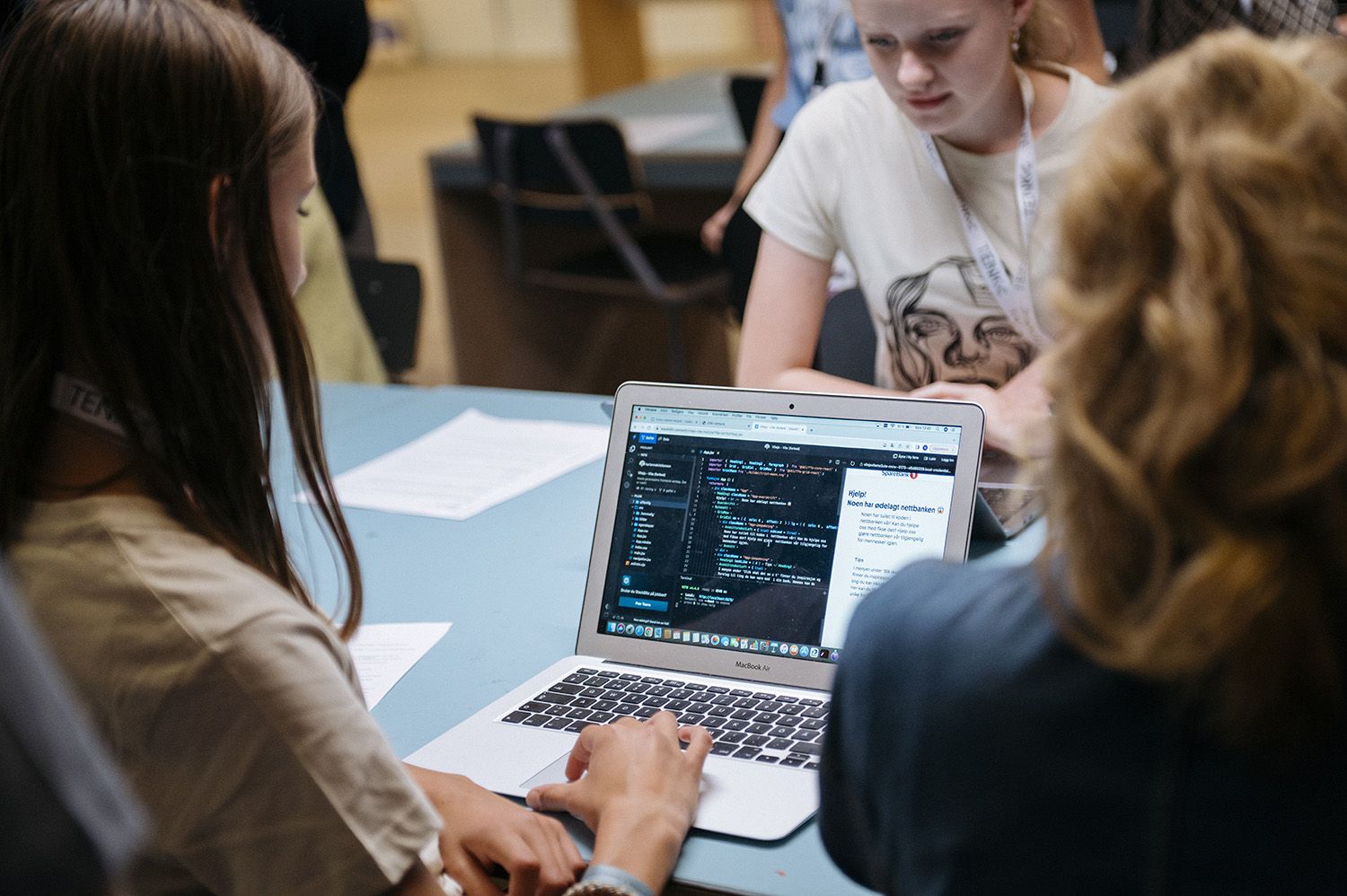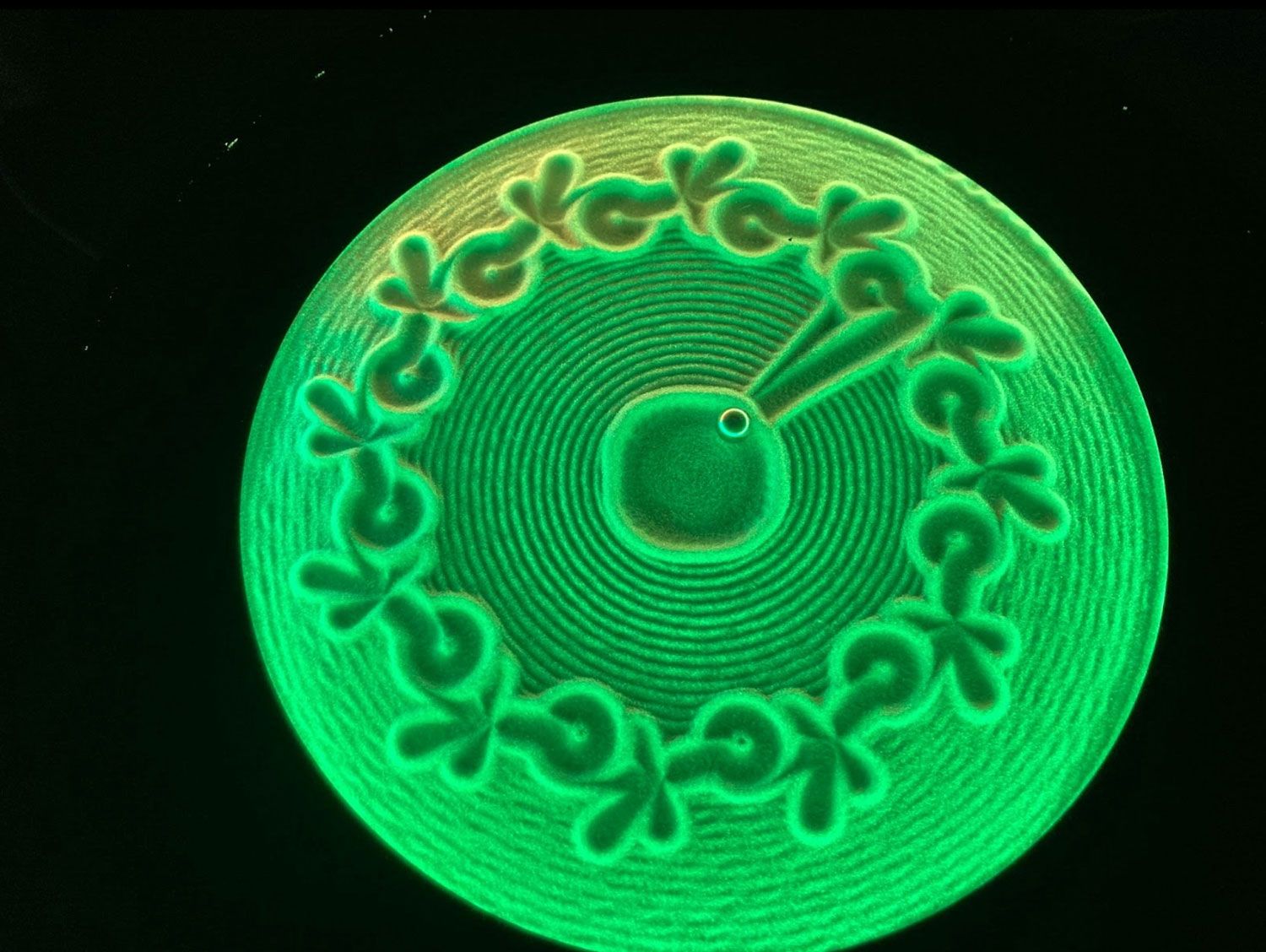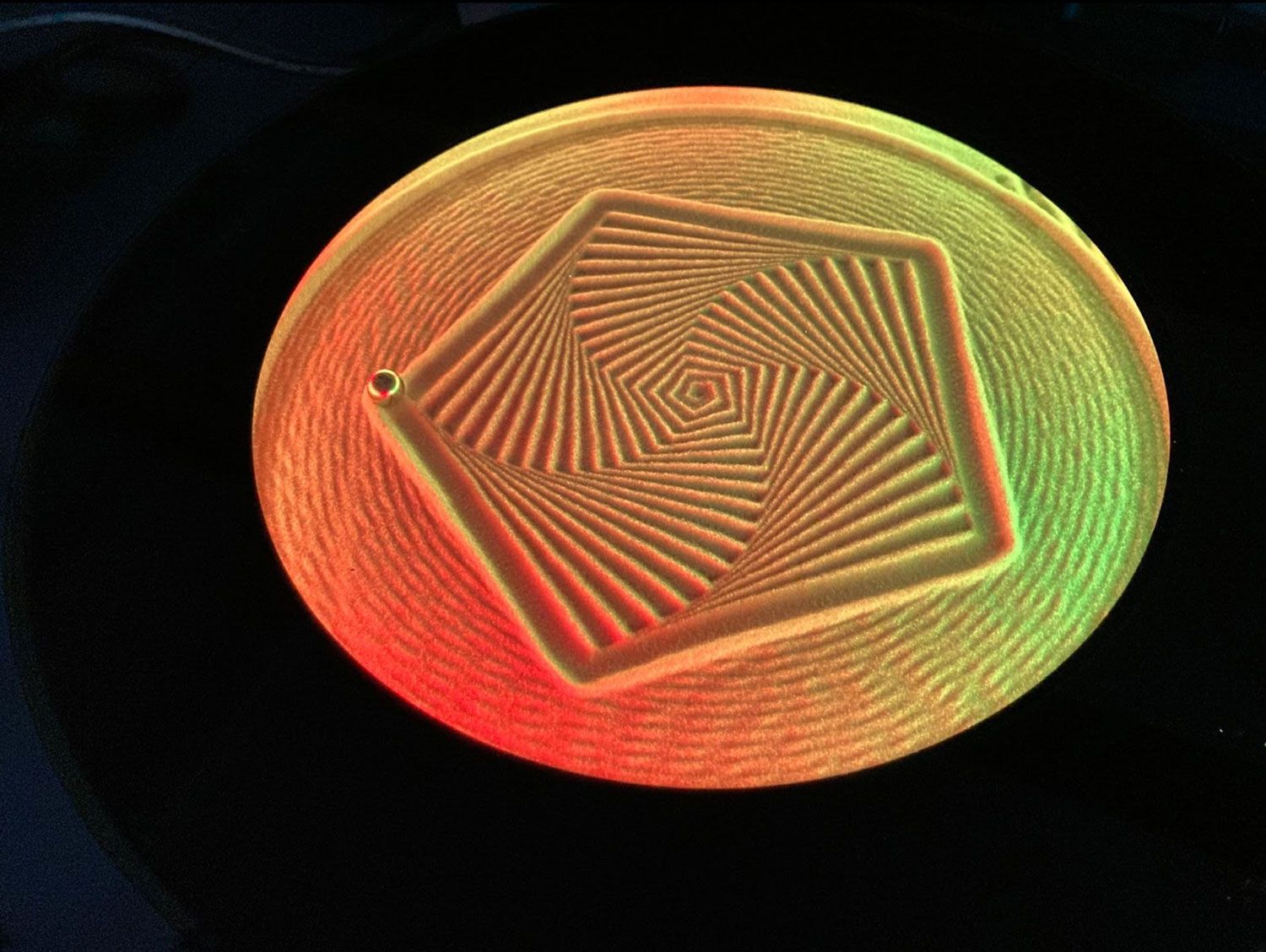Code art
with chatbot/python
- Home
- School and kindergarten
- 8–10 steps and VGS
- Code Art (text-based)
Have students create code art on a sand printer using programming and artificial intelligence. They get access to a chatbot as a learning assistant.
More and more schools are using chatbots in teaching, but how to use them to strengthen digital creativity and learning? Can artificial intelligence make text-based programming more accessible to more people?
In this teaching method, the students program geometric shapes which they print on a sand printer. They use Python and get access to a chatbot (artificial intelligence) as a learning assistant. The chatbot will provide guidance adapted to the individual student's level, promote independent problem solving and provide important knowledge about the use of artificial intelligence.
Through trial and error, students will experience how language models can promote digital creativity and programming skills, but also what limitations the technology has and how it can be misused.
The teaching plan is particularly relevant to the new curriculum (LK20) by combining arts and crafts with mathematics through programming.
The teaching offer has been developed with support from Sparebankstiftelsen DnB.
NB! Show up no later than 10 minutes before the lesson. Failure to attend without cancellation 7 days in advance will result in a NOK 500 fee.
Maximum 28 students
Duration 75 min
What happens in this teaching program?
Curriculum and competence targets | Core elements and competence targets 8.–10. stepsMathematics
Arts and crafts
Core elements and competence targets VGSMathematics – 1T
Mathematics – 1P
Science – VG1 SF
|
Description of the lesson | Introduction (approx. 30 min)
Activity (approx. 30 min)
Reflection (approx. 15 min)
|
Practical information | The teacher's roleWe want you as an adult to be active, participating and curious. Teachers are responsible for the group during the entire visit and may be asked to help along the way (not academic/programming) . Explainer is responsible for the implementation of the program. Before the visitOur teaching plans do not require preparatory work, but it is always useful to prepare students for a museum visit. Feel free to show pictures or video from the museum, tell us about what will happen, and see our digital resources that can be used for pre- and post-work. After the visitReflect and discuss with the students after the lesson, preferably in groups. |
You meet one of us!

John

Catharina

Øystein

Astrid
Common questions and answers
One of the teachers in the group approaches the reception. We will then register that you have arrived and you will be allocated a cloakroom space and possibly cabinet for locking up valuables.
Arrive at the museum no later than 10 minutes before the start of the program. Let us know if you will be delayed by phone. 22 79 60 00. If you arrive late, the learning offer may be shortened or cancelled.
Our teaching programs are free, but you have to pay for the entrance ticket to the museum. You can only book one arrangement per visit.
Separate prices apply to teachers, pupils and school classes.
Kindergartens and schools can pay by cash/card on arrival or receive an invoice. For invoices, you must include the requisition or resource number and invoice address.
Yes! Access to the museum's exhibitions is included in the ticket for school visits. You are most welcome to explore the exhibitions both before and after the lessons.
You can eat the packed lunch in different places; in the cafe, at the reception and outside the museum entrance. It is not allowed to eat or drink in the exhibitions.
At The Norwegian Museum of Science and Technology the same rules apply as at school/kindergarten. We will
- be role models for each other
- be kind to each other and the exhibits
- use consensus
- don't run.
ATTENTION: Everything behind barriers must not be touched.
Then we all have fun and contribute to a good learning experience. If you decide that your group can visit the museum shop, the teacher must be present as long as some of the children are there.
Resources
Below you will find various resources that can help prepare students for a museum visit.
-f2e53c96.jpeg)
Preparation: Random art
You need
- A sheet
- A dice
- A ruler
- A pencil
Put a cross in the middle of the sheet and place a ruler from the cross
Roll the die and draw a line with the pencil as many cm as the die shows.
Rotate the ruler 90 degrees.
Repeat 2-4 as many times as you want
Study the result and compare with the neighbours.

Post-work: Useful links
As follow-up work, the class can use the Sisyphus software that we used in the lesson.
For teaching, you can use our teaching resources (block or Python) in Google Slides.



